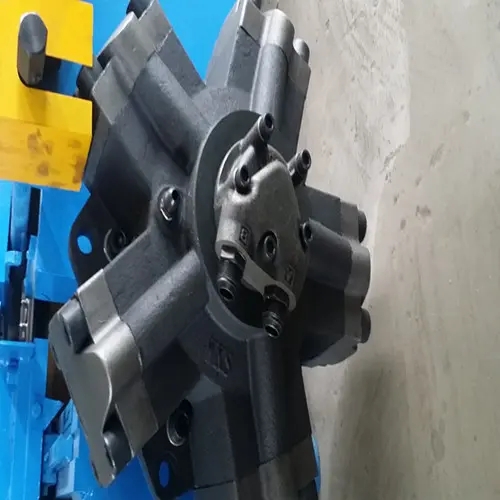
Understanding Bending Machines A Comprehensive Overview
Bending machines are indispensable tools in the metalworking and manufacturing industries, designed to shape metal sheets and other materials into various forms and angles. With advancements in technology, modern bending machines have evolved significantly, incorporating complex features that enhance their precision, efficiency, and versatility. In this article, we will explore the various types of bending machines, their applications, and the factors to consider when selecting the right machine for specific tasks.
Types of Bending Machines
1. Press Brake Press brakes are perhaps the most common type of bending machine. They use a pair of vertical forming tools or dies to bend the material into specific shapes. The operator places the metal sheet on a lower die, and the upper die descends to create the desired angle or curvature. Press brakes can operate in both manual and CNC (Computer Numerical Control) modes, allowing for high precision and repeatability in bending complex shapes.
2. Sheet Metal Benders These are typically smaller and more manual compared to press brakes. Sheet metal benders are ideal for bending lighter materials and are often used in small workshops. They come in various forms, including hand-operated and powered versions, and are suitable for creating simple bends and folds.
3. Roll Benders Roll bending machines use three rollers to bend metal into circular shapes. The material is passed through the rollers, which apply pressure to curve the material gradually. This type of bending machine is ideal for creating pipes, tubes, and cylindrical forms.
4. Mandrel Benders Mandrel bending machines are designed for achieving tighter bends with minimal deformation. They utilize a mandrel—a mechanical support inserted into the pipe or tube—to maintain a consistent cross-section during the bending process. This is especially important in applications requiring a high level of precision, such as in the automotive and aerospace industries.
Applications of Bending Machines
Bending machines are widely used across various industries, including
- Construction Steel and aluminum components often need to be bent for frames, columns, and supports. Bending machines enable the creation of precise angles required for structural integrity. - Automotive Many components in vehicles, such as exhaust systems and chassis parts, require bending. Advanced CNC bending machines are often used to ensure accuracy and repeatability in these critical parts.
- Aerospace Due to the stringent requirements for precision and quality, bending machines are essential in fabricating parts for aircraft and spacecraft, where structural integrity is paramount.

- Manufacturing In the production of consumer products, machinery parts, and custom fabrications, bending machines allow for efficient shaping of materials to meet design specifications.
Choosing the Right Bending Machine
Selecting the appropriate bending machine involves several considerations
1. Material Type and Thickness Different machines are suited for different materials and thicknesses. Ensuring that your machine can handle the specific materials you'll be working with is crucial.
2. Bend Complexity For intricate designs, a CNC press brake may be necessary, while simpler tasks might be accomplished with a manual bender or roll bender.
3. Production Volume If you require high volumes of identical parts, investing in a CNC machine could improve efficiency and reduce labor costs. For lower production numbers, a manual or semi-automated machine might suffice.
4. Budget Bending machines vary widely in price, depending on their capabilities and features. Establishing a budget that balances your needs with what you can afford is essential.
5. Maintenance and Support Consider the availability of servicing and support for the machine. A reliable manufacturer or dealer can provide necessary maintenance, ensuring the machine operates efficiently over its lifespan.
Conclusion
Bending machines are critical for creating a wide array of products across various industries. Understanding the types of bending machines available, their applications, and how to select the right one for your needs can significantly affect productivity and the quality of your output. As technology continues to advance, the capabilities of bending machines are only expected to improve, offering even greater precision and efficiency in metal forming processes. Investing in a high-quality bending machine is an investment in the future of your manufacturing capabilities.